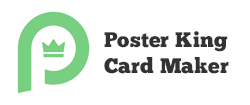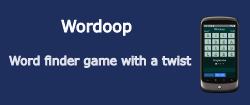Tips for Creating the Best Mobile App UX Design

In the fast-paced digital age we live in, mobile apps have become an integral part of our daily lives. Whether it's for social networking, online shopping, productivity, or entertainment, mobile apps have revolutionized the way we interact with technology. But, with millions of apps available in the app stores, competition is fierce. To stand out and succeed, it's crucial to focus on creating the best mobile app user experience (UX) possible.
In this guide, we'll explore essential tips for designing an outstanding mobile app UX and how mobile marketing software can complement your efforts.
Understanding the Importance of Mobile App UX
Before diving into design tips, let's emphasize why mobile app UX is so crucial. A great UX can make the difference between an app's success and failure. Users expect apps to be intuitive, efficient, and enjoyable to use. A poor UX can lead to frustration, negative reviews, and ultimately, users abandoning your app in favor of competitors. Here are some key reasons why investing in mobile app UX is essential:
1. Retention and Engagement
A well-designed app that provides an exceptional user experience encourages users to stay engaged and return frequently. It leads to higher retention rates, which are vital for the long-term success of your app.
2. Positive Reviews and Word of Mouth
Users are more likely to leave positive reviews and recommend your app to others if they have a great experience. Positive word of mouth can significantly boost your app's popularity.
3. Competitive Advantage
In a crowded app marketplace, a superior UX can give you a competitive edge. Users are more likely to choose an app that's easy to use and aesthetically pleasing.
4. Increased Conversions
For apps with e-commerce or subscription models, a smooth and intuitive UX can lead to higher conversion rates. Users are more likely to make purchases or subscribe if the process is hassle- free.
Tips for Crafting the Best Mobile App UX Design
Now that we've established the importance of mobile app UX, let's delve into some practical tips to help you create a top-notch user experience:
1. Know Your Audience
Start by thoroughly understanding your target audience. What are their needs, preferences, and pain points? Conduct user research, surveys, and competitor analysis to gather valuable insights. Tailor your app's design to meet the specific requirements of your target users.
2. Keep It Simple
Simplicity is key to a great mobile app UX. Avoid clutter, unnecessary features, and complex navigation. Stick to a minimalist design philosophy that focuses on the core functionality of your app.
3. Intuitive Navigation
Users should be able to navigate your app effortlessly. Implement a clear and logical menu structure, use familiar icons and gestures, and provide intuitive pathways for users to accomplish their goals.
4. Responsive Design
Ensure that your app is responsive and works seamlessly across different devices and screen sizes. Mobile app UX should be consistent whether users are on smartphones or tablets.
5. Prioritize Performance
A slow or buggy app can frustrate users quickly. Optimize your app's performance by reducing load times, minimizing crashes, and ensuring smooth animations and transitions.
6. Visually Pleasing Design
Invest in a visually appealing design that aligns with your brand identity. Use color schemes, typography, and imagery that resonate with your target audience. Consistency in design elements enhances recognition and user trust.
7. Feedback and Notifications
Provide clear feedback to users when they perform actions within your app. Use notifications judiciously to keep users informed about relevant updates and events without overwhelming them.
8. Personalization
Implement personalization features to tailor the user experience based on individual preferences and behavior. Personalized content and recommendations can enhance user engagement.
9. User Testing
Conduct regular user testing throughout the app development process. Gather feedback from real users and make iterative improvements based on their input.
10. Accessibility
Make your app accessible to all users, including those with disabilities. Follow accessibility guidelines and ensure that your app is usable with screen readers and other assistive technologies.
11. Continuous Improvement
Mobile app UX design is an ongoing process. Monitor user feedback and analytics to identify areas for improvement. Regularly update your app to address user needs and evolving trends.
Leveraging Mobile Marketing Platforms for App Success
Now, let's explore how mobile marketing platforms can complement your efforts in creating the best mobile app UX:
1. User Acquisition
Mobile marketing platforms can help you reach your target audience efficiently through various channels, including social media advertising, app store optimization (ASO), and influencer partnerships. By acquiring the right users, you increase the chances of delivering a positive UX to those who are genuinely interested in your app.
2. User Engagement
Engagement is a critical aspect of mobile app success. Mobile marketing platforms enable you to send personalized push notifications, in-app messages, and email campaigns to re-engage users and keep them actively using your app.
3. A/B Testing
Mobile marketing platforms often offer A/B testing capabilities, allowing you to experiment with different app UI/UX variations and determine which design elements and features resonate most with your audience. This data-driven approach can lead to better UX decisions.
4. Analytics and Insights
Mobile marketing platforms provide valuable insights into user behavior, allowing you to understand how users interact with your app. Use this data to identify areas of improvement and make data-informed UX design decisions.
5. App Store Optimization (ASO)
A crucial part of mobile app UX is getting users to discover and download your app. Mobile marketing platforms can assist with ASO strategies, optimizing your app's visibility in app stores and ensuring it ranks well in relevant search results.
In conclusion, crafting the best mobile app UX design is a multifaceted endeavor that requires a deep understanding of your audience and a commitment to continuous improvement. Prioritize simplicity, intuitiveness, and performance in your design, and leverage mobile marketing platforms to acquire and engage users effectively. By delivering an exceptional user experience, your mobile app can stand out in a crowded marketplace and achieve long-term success.
About The Author
Related Blog
View All-
App Funding: 7 Important Ways You Can Finance Your Next App
Do you have a great app idea in your head, but don't have the app funding you need? Here are 7 ways you can get the finance for your app idea. Do you have a great idea for a new app? That's great, but you should be aware of the risks involved. Less ...
-
5 top tips on choosing a screen recording software
Technology has made the process of communication simple in different aspects. Among the techniques is a screen recording, which involves sharing information on your screen with other viewers. In some cases, delivering information via text may not be practical due ...







